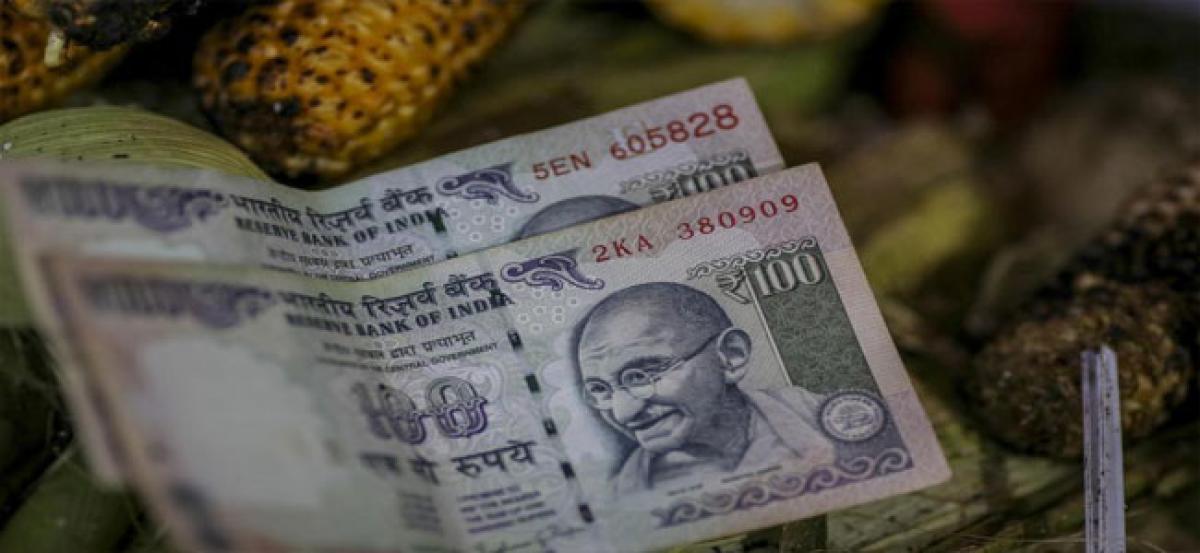Live
- AI can boost early diagnosis of liver disease: Study
- Varun's appointment as AHUDA chief infused new vigour in JSP cadres
- Lokayukta, HRC will remain in Kurnool: Minister Bharath
- S Korea, US, Japan unveil secretariat establishment, slam N Korea-Russia on Ukraine war expansion
- Light to Moderate Rains Expected in Telangana and Andhra Pradesh
- Pilgrims throng Sabarimala temple on opening day of long festive season
- Jwala Thoranam held at Srisailam temple
- Birsa Munda Jayanti celebrated
- Another tigress released in soft enclosure in Similipal
- Coastal defence exercise on Nov 20-21
Just In

Foreign direct investment (FDI) in India seems to be petering out with the inflows growth rate recording a five-year low of 3% at $44.85 billion in 2017-18.
According to the latest data of the Department of Industrial Policy and Promotion (DIPP), FDI in 2017-18 grew by only 3% to $44.85 billion.
Foreign direct investment (FDI) in India seems to be petering out with the inflows growth rate recording a five-year low of 3% at $44.85 billion in 2017-18.
According to the latest data of the Department of Industrial Policy and Promotion (DIPP), FDI in 2017-18 grew by only 3% to $44.85 billion.
Foreign inflows in the country grew by 8.67% in 2016-17, 29% in 2015-16, 27% in 2014-15, and 8% in 2013-14.
However, FDI inflows recorded a negative growth of 38% in 2012-13. According to experts, it is critical to revive domestic investments and further ease of doing business in the country to attract foreign investors.
Anil Talreja, Partner, Deloitte India, said the low growth of FDI in the consumer and retail sectors can be mainly attributed to uncertainty and complexity of the FDI policy.
“While the government has taken substantial efforts in relaxing the regulations as well as removing ambiguities, global consumer and retail companies are still hesitant to take decisions to invest in India,” he said.
India has done considerably well in terms of moving up the ranking in terms of ease of doing business, however, it needs to reach a level that creates enthusiasm for the overseas investors, Talreja added.
Biswajit Dhar, professor at Jawaharlal Nehru University, said, “The status of economy reflects the magnitude of the FDI in a country. In the past couple of years, we have seen decline in domestic investment rate and now, FDI is following that suit.”
He said that the government needs to take steps for reviving the domestic investment to attract foreign investors.
A UNCTAD report, too, has recently stated that the foreign direct investment in India decreased to $40 billion in 2017 from $44 billion in 2016 fiscal.
However, outflows from India, the main source of the FDI in South Asia, more than doubled to $11 billion, the report stated.
UNCTAD Secretary-General Mukhisa Kituyi has said, “Downward pressure on the FDI and slowdown in global value chains are a major concern for policy makers worldwide, and especially in developing countries”.
The main sectors that received maximum foreign inflows in the last fiscal include services ($ 6.7 billion), computer software and hardware ($ 6.15 billion), telecommunications ($ 6.21 billion), trading ($ 4.34 billion), construction ($ 2.73 billion) automobile ($ 2 billion) and power ($ 1.62 billion) .
Mauritius has emerged as the largest source of FDI in India with $ 15.94 billion in 2017-18 followed by Singapore ($ 12.18 billion), Netherlands ($ 2.8 billion), the US ($ 2.1 billion) and Japan ($ 1.61 billion)Further, the data showed that the FDI equity inflow of $ 44.8 billion in 2017-18 is the highest ever for any financial year.
FDI is important as India would require huge investments in the coming years to overhaul its infrastructure sector to boost growth. Decline in foreign inflows could put pressure on the country’s balance of payments and may also impact the value of the rupee.

© 2024 Hyderabad Media House Limited/The Hans India. All rights reserved. Powered by hocalwire.com







